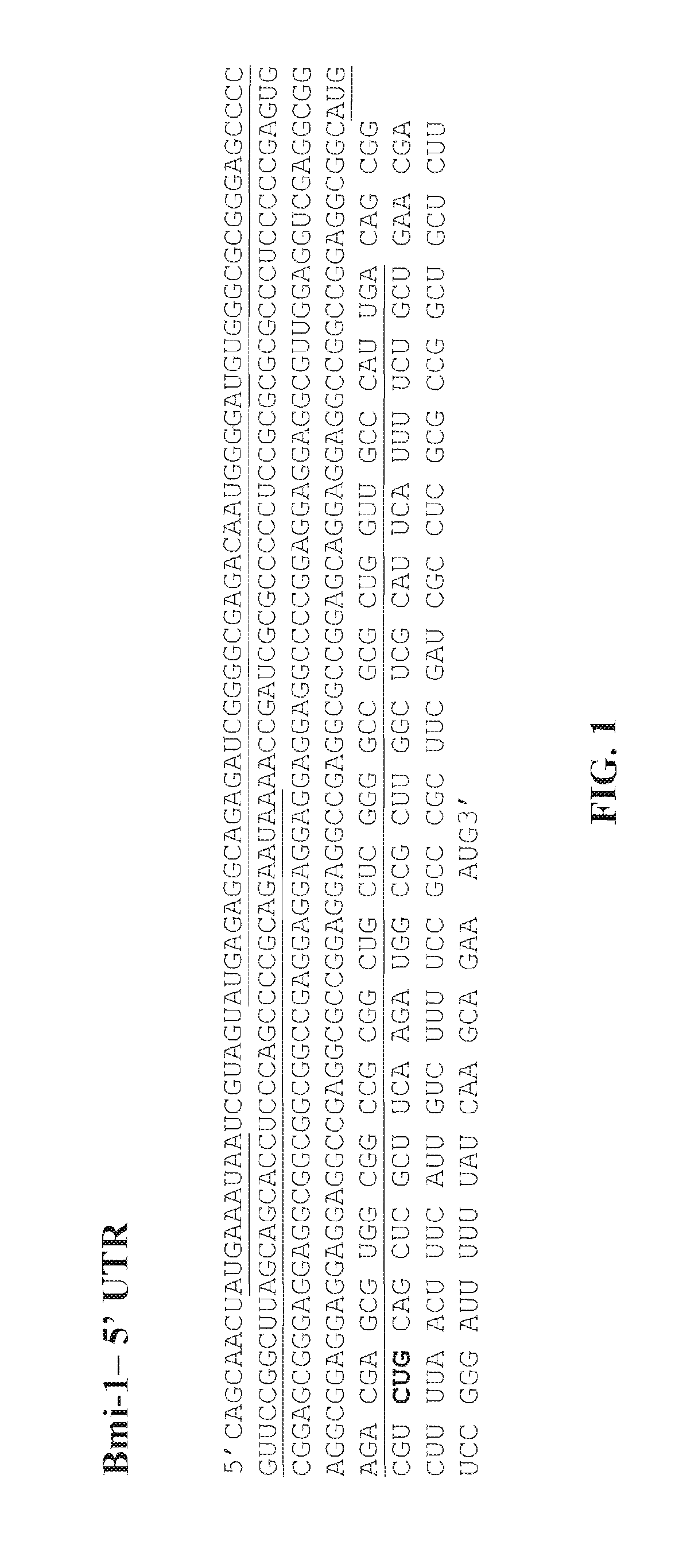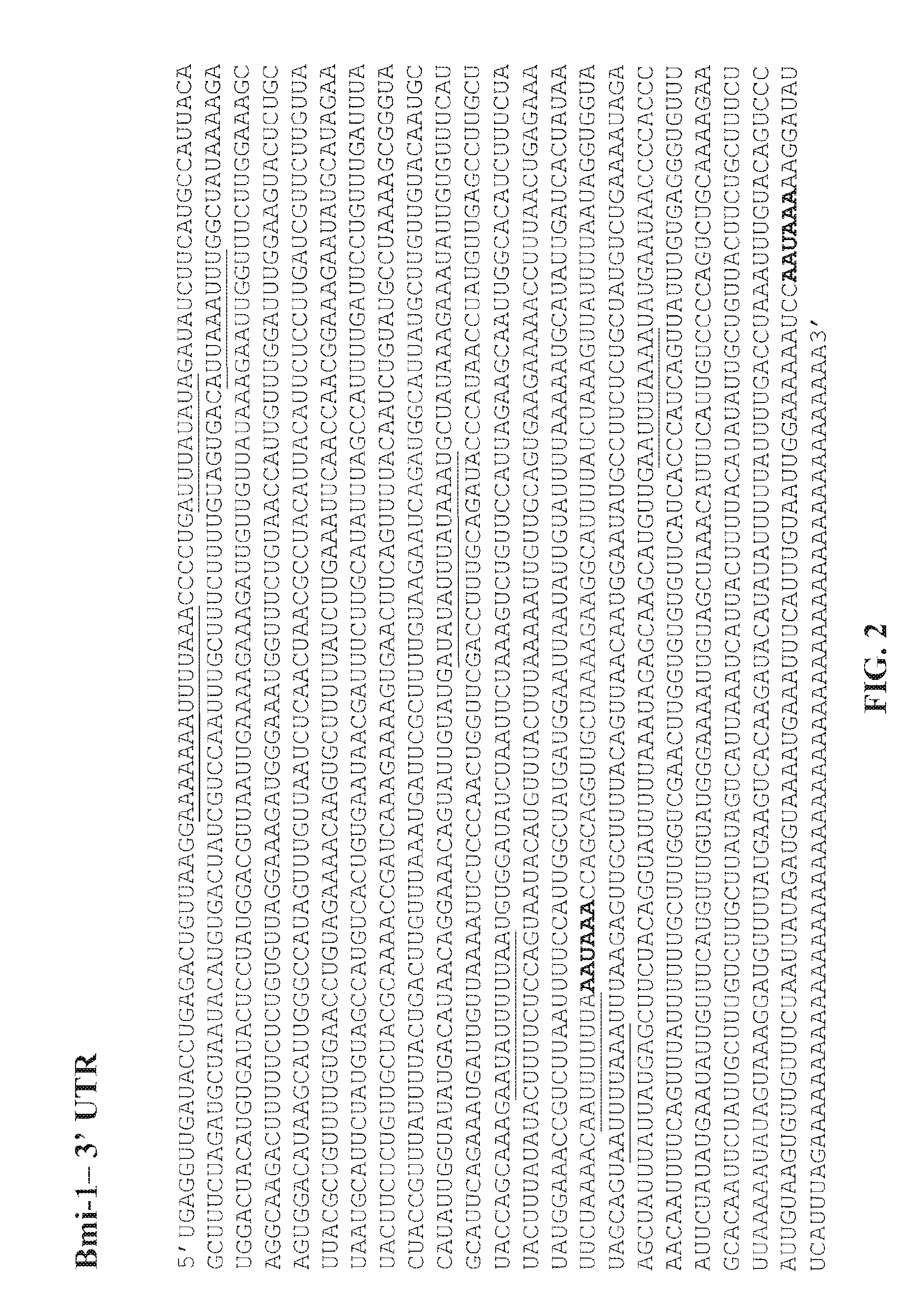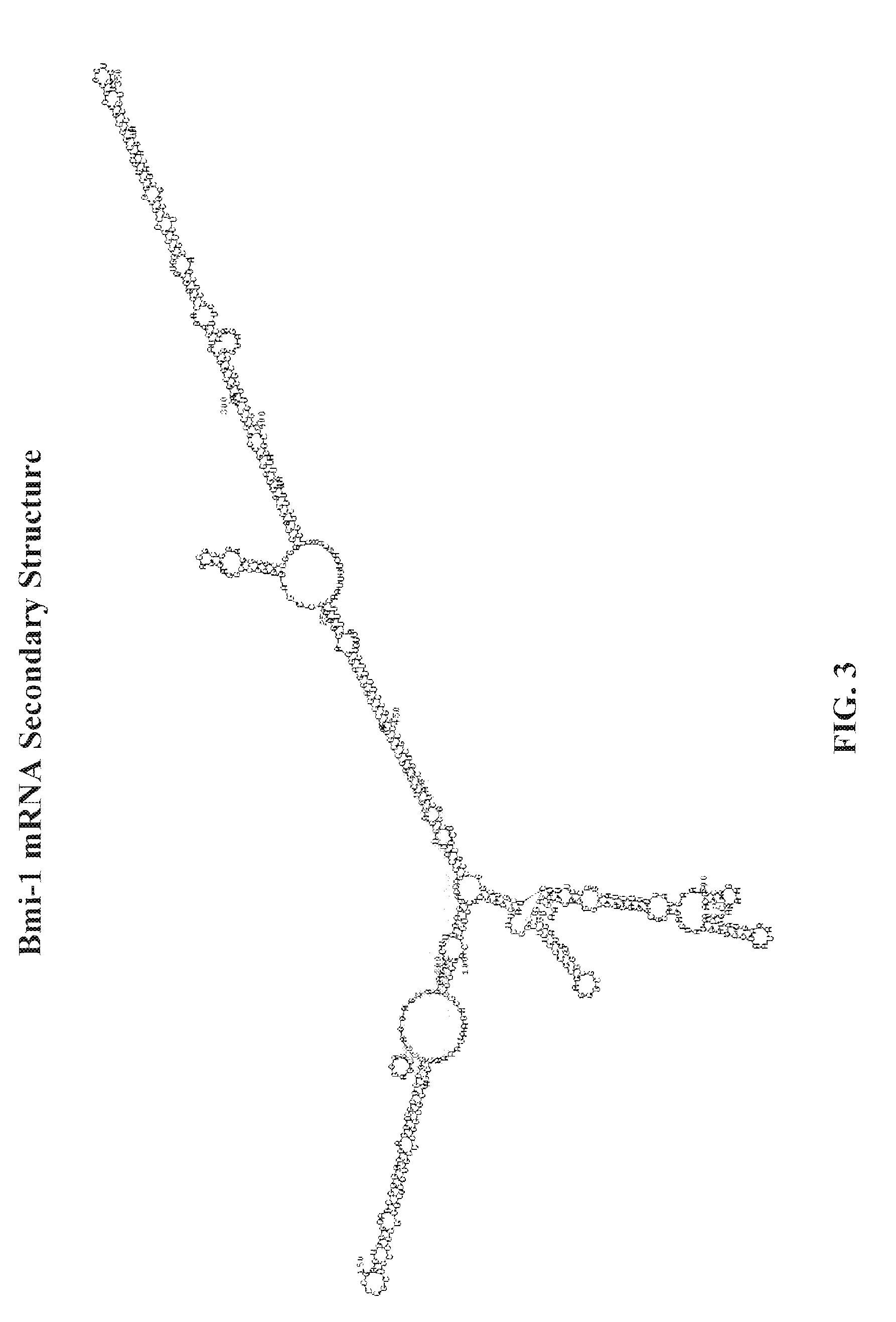Methods for screening for compounds for treating cancer
- Summary
- Abstract
- Description
- Claims
- Application Information
AI Technical Summary
Benefits of technology
Problems solved by technology
Method used
Image
Examples
example 1
UTR-Mediated Regulation of Bmi-1 Expression
[0272]To determine the role of each Bmi-1 UTR in the regulation of protein expression of Bmi-1, the following constructs were generated: (i) pcDNA3.1 / Bmi-1 5′-UTR.luc (FIG. 6B): a construct comprising the firefly luciferase gene operably linked and downstream of the 5′-UTR of human Bmi-1 and 21 nucleotides from the 5′ end of the ORF of human Bmi-1; (ii) pcDNA3.1 / Bmi-1 3′-UTR.luc (FIG. 6C): a construct comprising the firefly luciferase gene operably linked and upstream of 21 nucleotides from the 3′ end of the ORF of human Bmi-1 and the 3′-UTR of human Bmi-1; (iii) pcDNA3.1 / Bmi-1 5′+3′-UTR.luc (FIG. 6A): a construct comprising the 5′-UTR of human Bmi-1, 21 nucleotides from the 5′ end of the ORF of human Bmi-1, the firefly luciferase gene, 21 nucleotides from the 3′ end of human Bmi-1 and the 3′-UTR of human Bmi-1, wherein the 5′-UTR of human Bmi-1 and the 21 nucleotides from the 5′ end of the ORF of human Bmi-1 are upstream of the luciferase ...
example 2
IRES Activity in the 5′ UTR of Bmi-1
[0285]To determine the presence of an IRES (Internal Ribosome Entry Site) in the 5′-UTR of Bmi-1, the Bmi-1 5′-UTR sequence was cloned into a bicistronic luciferase reporter vector p2luc, a construct widely used to test for IRES activity. In this vector, expression of the first reporter, renilla luciferase, is driven by cap-dependent translation, while the translation of second reporter, firefly luciferase, only occurs if there is IRES activity between the two reporter genes.
Preparation of Nucleic Acid Constructs
[0286]All DNA constructs were generated using standard procedures (Sambrook, J., Fritsch, E. & Maniatis, T. Molecular cloning: A laboratory manual (Cold Spring Harbor Laboratory Press, Cold Spring Harbor, N.Y., 1989). All PCR reagents were purchased from Invitrogen and the restriction enzymes were bought from New England BioLab.
[0287]To determine whether the Bmi-1 5′-UTR contains an IRES, the following DNA constructs were made: i) p2luc / Bm...
example 3
Identification of Compounds that Inhibit Bmi-1 Expression Post-Transcriptionally
[0295]As shown in the following example, compounds that decrease or down-regulate the expression of Bmi-1 protein have been identified and have the potential to treat cancer. Human embryonic kidney (293H) cell lines expressing the firefly luciferase (fLuc) reporter gene flanked by the 5′-UTR and 3′-UTR of Bmi-1 mRNA were constructed and used to identify and validate compounds able to specifically decrease, down-regulate, or reduce expression of a reporter gene via nucleic acid constructs comprising at least the 5′-UTR and 3′-UTR of Bmi-1, as well as decrease, down-regulate, or reduce expression of endogenous Bmi-1 protein.
Preparation of the Nucleic Acid Constructs Comprising the UTRs of Bmi-1
[0296]A high-level expression vector, pcDNA™3.1 / Hygro (Invitrogen Corp., Carlsbad, Calif.) was used for preparing the constructs comprising the luciferase gene flanked by any of the Bmi-1 5′-UTR and 3′-UTR, or the Bm...
PUM
| Property | Measurement | Unit |
|---|---|---|
| Mass | aaaaa | aaaaa |
| Molar density | aaaaa | aaaaa |
| Molar density | aaaaa | aaaaa |
Abstract
Description
Claims
Application Information
 Login to View More
Login to View More - R&D
- Intellectual Property
- Life Sciences
- Materials
- Tech Scout
- Unparalleled Data Quality
- Higher Quality Content
- 60% Fewer Hallucinations
Browse by: Latest US Patents, China's latest patents, Technical Efficacy Thesaurus, Application Domain, Technology Topic, Popular Technical Reports.
© 2025 PatSnap. All rights reserved.Legal|Privacy policy|Modern Slavery Act Transparency Statement|Sitemap|About US| Contact US: help@patsnap.com



